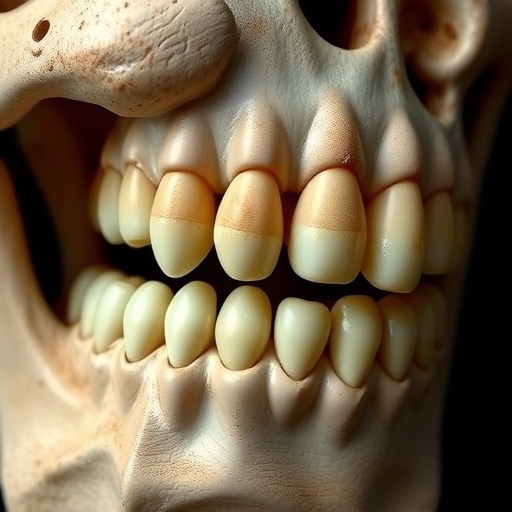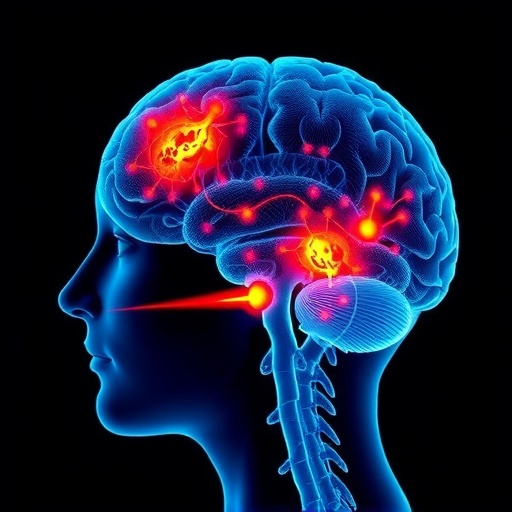In a groundbreaking advancement within forensic science, researchers have systematically reviewed the application of radiocarbon dating on dental tissues to more accurately determine the postmortem interval, or time since death. This innovative approach offers unprecedented precision in forensic investigations, especially when traditional methods reach their limits. The technique involves analyzing the levels of radiocarbon—an isotope of carbon generated naturally and intensified due to mid-20th-century nuclear testing—in the mineralized tissues of teeth, unlocking a new temporal dimension that was previously obscured.
Teeth, due to their durability and structural composition, are ideal candidates for radiocarbon analysis. Unlike soft tissues, which decompose rapidly, dental enamel and dentin remain remarkably stable over extended periods, effectively preserving a biochemical record akin to time capsules. Radiocarbon dating capitalizes on the “bomb pulse” phenomenon, a spike in atmospheric radiocarbon levels caused by nuclear bomb testing in the 1950s and 1960s. Since this pulse generated a global radiocarbon signature, the isotope levels absorbed by dental tissues serve as chronological markers, cataloging the time of tooth formation and, by extension, providing clues about the timing of death.
This method’s forensic potential is profound, particularly in cases where bodies are discovered long after death or in advanced states of decomposition. In such scenarios, traditional estimations based on physical and environmental factors often yield broad, imprecise time frames. The systematic review by Milani et al. meticulously analyzes a wealth of previously published studies to assess how radiocarbon signatures within dental tissues can be reliably used to narrow down the time since death with remarkable specificity.
One essential element explored in the review is how the carbon isotope levels incorporated during the formation of different dental tissues correspond to historical radiocarbon data, allowing forensic experts to correlate the isotopic signals found in teeth with known atmospheric fluctuations. The researchers highlight that the precise stratification of dental tissues, such as the inner dentin and outer enamel, can isotopically represent different bouts of carbon intake, effectively layering the recorded radiocarbon signal through various stages of a person’s life.
Further, the review addresses the technological advancements in accelerator mass spectrometry (AMS), the key analytical technique employed to measure radiocarbon concentrations with exceptional sensitivity. AMS allows for the quantification of minute amounts of carbon isotope ratios from microscopic tooth samples, enabling a minimally destructive approach that preserves forensic evidence while delivering critical chronological data.
Milani and colleagues also delve into the challenges and limitations involved in this emerging application. For instance, the review discusses how environmental factors, such as diet and geographical variability in background radiocarbon levels, can introduce variations in the isotopic composition measured in dental tissues. Despite these caveats, the consensus from the accumulated data suggests that with careful calibration and cross-referencing with known regional atmospheric carbon records, radiocarbon dating remains one of the most robust tools for postmortem interval estimation.
Moreover, the review acknowledges the potential for integrating radiocarbon dating with other forensic methodologies, such as DNA degradation analysis and forensic entomology, to assemble a more comprehensive temporal profile in death investigations. This multidisciplinary approach could significantly enhance the legal robustness of forensic evidence presented in courtrooms and help resolve long-standing cold cases where time since death was previously indeterminable.
The systematic review also explores the ethical and legal implications of employing radiocarbon dating in forensic contexts. Since the method involves invasive sampling of dental tissues—often requiring extraction or drilling of teeth—researchers stress the necessity of balancing scientific inquiry with respect for the deceased and their families, underscoring the importance of obtaining proper permissions and adhering to legal frameworks governing postmortem examinations.
Intriguingly, the authors project future directions where the technique’s resolution might be refined even further, potentially distinguishing between time intervals spanning days or weeks, compared to the current monthly or yearly scales. This would open up opportunities not only in forensic science but also in archaeology, anthropology, and even medical diagnostics, extending the utility of radiocarbon analysis beyond initial forensics.
Several case studies discussed within the review illustrate real-world applications, where radiocarbon dating of teeth has successfully assisted forensic teams in validating timelines, ruling out or confirming suspects, and identifying unknown remains. These cases exemplify how the method’s scientific rigor complements traditional investigative tools, providing a clearer narrative in complex death investigations.
Complementing the narrative, the article emphasizes the importance of ongoing research to establish standardized protocols for sample preparation, data interpretation, and quality control to further enhance the reliability of radiocarbon dating in forensic dental analysis. This standardization is crucial as the technique gains traction worldwide, ensuring consistent application and comparability of results across laboratories.
In conclusion, the systematic review presented by Milani et al. marks a significant milestone in forensic science, elucidating the sophisticated interplay between nuclear physics, dental histology, and forensic investigation. By harnessing the unique time-encoded signatures etched in human teeth, radiocarbon dating emerges as a vital tool to resolve the often-elusive time since death, opening new avenues for justice and closure in forensic cases globally.
As technological and methodological refinements continue, this approach is poised to transform the forensic landscape, offering investigators a powerful means to uncover the silent stories whispered by dental tissues. The research underscores the profound potential of interdisciplinary science in tackling real-world challenges, ultimately bridging the gap between technological innovation and human stories left unresolved.
Subject of Research: Radiocarbon dating of dental tissues to determine time since death in forensic cases
Article Title: Radiocarbon dating of dental tissues for determining time since death in forensic cases: a systematic review
Article References:
Milani, C., Lancia, M., Gambelunghe, C. et al. Radiocarbon dating of dental tissues for determining time since death in forensic cases: a systematic review. Int J Legal Med (2025). https://doi.org/10.1007/s00414-025-03666-0
Image Credits: AI Generated
DOI: https://doi.org/10.1007/s00414-025-03666-0
Tags: advanced decomposition forensic techniquesbomb pulse radiocarbon datingchronological markers in teethdental tissue analysisforensic investigations precisionforensic science advancementsinnovative forensic methodologiesnuclear testing effects on radiocarbonpostmortem interval analysisradiocarbon dating teethstable tooth compositiontime since death determination





